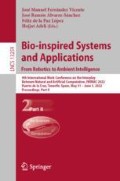Abstract
Predicting landslides is a task of vital importance to prevent disasters, avoid human damage and reduce economic losses. Several research works have determined the suitability of Machine Learning techniques to address this problem. In the present study, we leverage a neural network model for landslide prediction developed in our previous work, in order to identify the specific areas where landslides are most likely to occur. We have created a dataset that collects an inventory of landslides and geological, geomorphological and meteorological conditioning factors of a region susceptible to this type of events. Among these variables, precipitation is widely recognized as a trigger of the phenomenon. In contrast to related works, we considered precipitation in a cumulative form with different time windows. The application of our model produces probability values which can be represented as multi-temporal landslide susceptibility maps. The distribution of the values in the different susceptibility classes is performed by means of equal intervals, quantile, and Jenks methods, whose comparison allowed us to select the most appropriate map for each cumulative precipitation. In this way, the areas of maximum risk are identified, as well as the specific locations with the highest probability of landslides. These products are valuable tools for risk management and prevention.
Access this chapter
Tax calculation will be finalised at checkout
Purchases are for personal use only
References
Ali, S.A., et al.: GIS-based landslide susceptibility modeling: a comparison between fuzzy multi-criteria and machine learning algorithms. Geosci. Front. 12(2), 857–876 (2021)
Di Napoli, M., et al.: Machine learning ensemble modelling as a tool to improve landslide susceptibility mapping reliability. Landslides 17(8), 1897–1914 (2020). https://doi.org/10.1007/s10346-020-01392-9
Guzzetti, F., et al.: Landslide inventory maps: new tools for an old problem. Earth Sci. Rev. 112(1), 42–66 (2012). https://www.sciencedirect.com/science/article/pii/S0012825212000128
Lee, J.-H., Kim, H., Park, H.-J., Heo, J.-H.: Temporal prediction modeling for rainfall-induced shallow landslide hazards using extreme value distribution. Landslides 18(1), 321–338 (2020). https://doi.org/10.1007/s10346-020-01502-7
Liang, Z., et al.: A hybrid model consisting of supervised and unsupervised learning for landslide susceptibility mapping. Remote Sens. 13, 1464 (2021)
Ma, Z., Mei, G., Piccialli, F.: Machine learning for landslides prevention: a survey. Neural Comput. Appl. 33(17), 10881–10907 (2020). https://doi.org/10.1007/s00521-020-05529-8
Maxwell, A.E., et al.: Slope failure prediction using random forest machine learning and lidar in an eroded folded mountain belt. Remote Sens. 12(3), 486 (2020)
Merghadi, A., et al.: Machine learning methods for landslide susceptibility studies: a comparative overview of algorithm performance. Earth Sci. Rev. 207, 103225 (2020)
Pham, B.T., et al.: A novel ensemble classifier of rotation forest and Naive Bayer for landslide susceptibility assessment at the LUC Yen District, Yen Bai Province (Viet Nam) using GIS. Geomat. Nat. Hazards Risk 8(2), 649–671 (2017)
Rodríguez, B.G., Meneses, J.S., Garcia-Rodriguez, J.: Improving landslides prediction: meteorological data preprocessing using random forest-based feature selection. In: Sanjurjo González, H., Pastor López, I., García Bringas, P., Quintián, H., Corchado, E. (eds.) SOCO 2021. AISC, vol. 1401, pp. 379–387. Springer, Cham (2022). https://doi.org/10.1007/978-3-030-87869-6_36
Youssef, A.M., Pourghasemi, H.R.: Landslide susceptibility mapping using machine learning algorithms and comparison of their performance at Abha Basin, Asir region, Saudi Arabia. Geosci. Front. 12(2), 639–655 (2021)
Zhu, Q., et al.: Unsupervised feature learning to improve transferability of landslide susceptibility representations. IEEE J. Sel. Top. Appl. Earth Obs. Remote Sens. 13, 3917–3930 (2020)
Author information
Authors and Affiliations
Corresponding author
Editor information
Editors and Affiliations
Rights and permissions
Copyright information
© 2022 Springer Nature Switzerland AG
About this paper
Cite this paper
Guerrero-Rodriguez, B., Garcia-Rodriguez, J., Salvador, J., Mejia-Escobar, C., Bonifaz, M., Gallardo, O. (2022). Defining High Risk Landslide Areas Using Machine Learning. In: Ferrández Vicente, J.M., Álvarez-Sánchez, J.R., de la Paz López, F., Adeli, H. (eds) Bio-inspired Systems and Applications: from Robotics to Ambient Intelligence. IWINAC 2022. Lecture Notes in Computer Science, vol 13259. Springer, Cham. https://doi.org/10.1007/978-3-031-06527-9_18
Download citation
DOI: https://doi.org/10.1007/978-3-031-06527-9_18
Published:
Publisher Name: Springer, Cham
Print ISBN: 978-3-031-06526-2
Online ISBN: 978-3-031-06527-9
eBook Packages: Computer ScienceComputer Science (R0)

